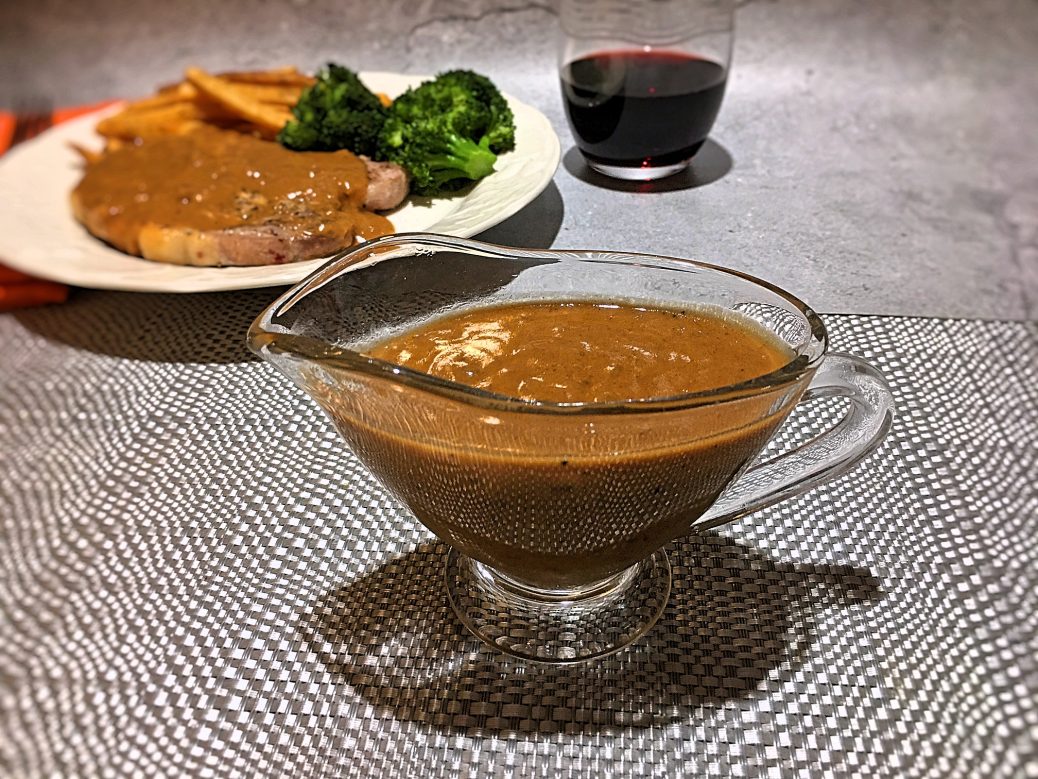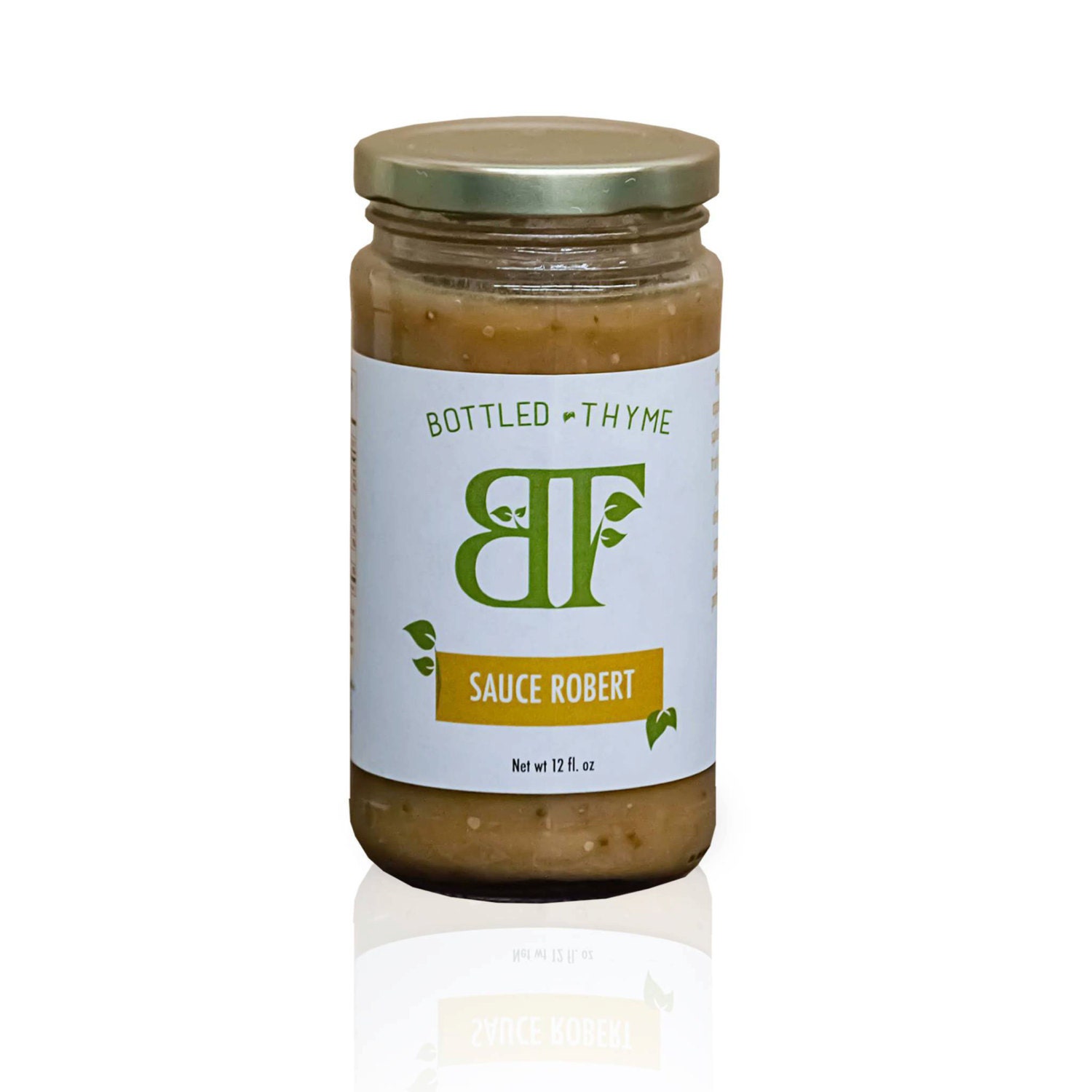Sauce robert recipe – Sauce Robert, a classic French sauce, is a versatile culinary creation that elevates the flavors of various dishes. With its smooth texture and tangy taste, it’s no wonder this sauce has stood the test of time. Join us as we explore the secrets of Sauce Robert, from its essential ingredients to creative variations and delectable pairing suggestions.
Sauce Robert Base Ingredients

Sauce Robert is a classic French sauce made from a combination of butter, shallots, white wine, and vinegar. These ingredients work together to create a flavorful and versatile sauce that can be used on a variety of dishes.
The butter in the sauce provides a rich and creamy base, while the shallots add a subtle sweetness and depth of flavor. The white wine adds a touch of acidity and brightness, and the vinegar helps to balance out the flavors and add a bit of tanginess.
Shallots
- Shallots are a type of onion that has a milder flavor than a yellow or red onion. They are essential to the flavor of Sauce Robert, and they should be finely chopped before being added to the sauce.
- The shallots are cooked in butter until they are softened and translucent. This helps to release their flavor and sweetness.
White Wine
- The type of white wine used in Sauce Robert is important. A dry white wine, such as a Sauvignon Blanc or Pinot Grigio, is the best choice. The wine should be added to the sauce and cooked until it has reduced by half.
- The white wine adds a touch of acidity and brightness to the sauce. It also helps to deglaze the pan and dissolve any browned bits.
Vinegar
- The vinegar used in Sauce Robert is typically white wine vinegar or champagne vinegar. The vinegar should be added to the sauce after the white wine has reduced. It helps to balance out the flavors and add a bit of tanginess.
- The amount of vinegar used in the sauce can be adjusted to taste. If you prefer a more tart sauce, add more vinegar. If you prefer a milder sauce, add less vinegar.
Sauce Robert Variations: Sauce Robert Recipe

Sauce Robert is a versatile sauce that can be customized to suit various tastes and preferences. Here are some popular variations:
Mustard Variation
- Add 1-2 tablespoons of Dijon mustard to the base sauce.
- This variation adds a tangy and slightly spicy flavor to the sauce, making it ideal for serving with grilled or roasted meats.
Tarragon Variation
- Add 1-2 tablespoons of chopped fresh tarragon to the base sauce.
- Tarragon imparts a delicate herbal flavor that complements the richness of the sauce. This variation is perfect for serving with fish or seafood dishes.
White Wine Variation, Sauce robert recipe
- Replace the water in the base sauce with 1/2 cup of dry white wine.
- The wine adds a subtle acidity and depth of flavor to the sauce, making it an excellent choice for serving with poultry or pork dishes.
Tomato Variation
- Add 1/4 cup of diced tomatoes to the base sauce.
- This variation creates a vibrant and flavorful sauce that is perfect for serving with pasta or vegetable dishes.
Sauce Robert Pairing Suggestions

Sauce Robert’s versatility makes it an excellent complement to a wide range of dishes. Its balanced flavors enhance the taste of various ingredients without overpowering them.
The sauce pairs particularly well with seafood, especially grilled or steamed fish. The delicate flavors of the fish allow the sauce’s nuances to shine through, creating a harmonious balance of flavors.
Vegetables
- Asparagus: The earthy flavor of asparagus pairs well with the tangy sauce, enhancing its natural sweetness.
- Broccoli: The mild bitterness of broccoli is complemented by the sauce’s acidity, resulting in a well-rounded flavor profile.
- Cauliflower: The neutral flavor of cauliflower provides a blank canvas for the sauce’s flavors to bloom, creating a delightful combination.
Meats
- Grilled Chicken: The smoky flavor of grilled chicken pairs beautifully with the sauce’s tangy sweetness, creating a tantalizing dish.
- Pork Chops: The richness of pork chops is balanced by the acidity of the sauce, resulting in a harmonious and flavorful experience.
- Lamb Chops: The gamey flavor of lamb chops is complemented by the sauce’s aromatic notes, creating a delectable combination.
Sauce Robert Preparation Techniques

Creating Sauce Robert involves a precise step-by-step process that requires attention to detail and proper technique. Let’s dive into the essential steps and techniques involved in crafting this delectable sauce.
Whisking and Emulsifying
Whisking is a crucial technique in making Sauce Robert. It incorporates air into the sauce, creating a smooth and velvety texture. Whisking also helps emulsify the sauce, combining the vinegar and butter into a stable mixture. To achieve a well-emulsified sauce, whisk vigorously and consistently until the sauce thickens and holds its shape.
Reducing
Reducing is another essential technique in Sauce Robert preparation. By simmering the sauce over low heat, the liquid evaporates, concentrating the flavors and thickening the consistency. Reducing the sauce also enhances its richness and depth of flavor.
Sauce Robert Presentation Ideas

To elevate the visual appeal of Sauce Robert, consider the following presentation techniques:
Choose a serving vessel that complements the dish it accompanies. A small saucepan or gravy boat allows for easy pouring and creates a classic presentation. Alternatively, individual ramekins add a touch of elegance.
Sauce Robert is a classic French sauce that is typically made with a base of butter, flour, and stock. It is often used to accompany grilled or roasted meats and vegetables. If you are looking for a low-sodium version of this sauce, there are several low sodium sauce recipes available online.
These recipes typically use low-sodium chicken or beef broth and omit the salt that is typically added to the sauce. The resulting sauce is just as flavorful as the traditional version, but it is much healthier for you.
Garnishes and Accompaniments
- Fresh Herbs: Chopped parsley, chives, or tarragon add a vibrant pop of color and enhance the sauce’s flavor.
- Lemon Zest: A sprinkle of lemon zest brightens the sauce and adds a hint of citrusy freshness.
- Capers: These small, briny pearls add a touch of salty acidity and visual interest.
- Fried Onions: Crispy fried onions add a crunchy texture and a savory touch to the sauce.
- Grilled Vegetables: Roasted or grilled vegetables, such as asparagus or mushrooms, can be arranged alongside the sauce for a colorful and flavorful accompaniment.
Sauce Robert Storage and Shelf Life
/gravy-in-a-glass-pitcher-ladle-76943870-581260fc3df78c2c7385ae07.jpg)
Proper storage is crucial for maintaining the quality and flavor of Sauce Robert. The sauce should be refrigerated at all times to prevent spoilage. Transfer the sauce to an airtight container to prevent oxidation and contamination. If stored correctly, Sauce Robert can last for up to 3 days in the refrigerator.
Factors Affecting Shelf Life
Several factors can affect the shelf life of Sauce Robert:
- Temperature: Sauce Robert is a delicate sauce that is susceptible to spoilage at high temperatures. Storing the sauce at the correct temperature is essential to maintain its quality.
- Air Exposure: Oxidation can degrade the flavor and quality of Sauce Robert. Keeping the sauce in an airtight container minimizes air exposure and preserves its freshness.
- Contamination: Sauce Robert can become contaminated if it comes into contact with bacteria or other microorganisms. Using clean utensils and containers when handling the sauce is essential to prevent contamination.
Sauce Robert Troubleshooting

Even the most experienced chefs can encounter difficulties while preparing Sauce Robert. Here are some common problems that may arise and practical solutions to resolve them:
Lumpy Sauce
A lumpy sauce can occur if the ingredients are not properly incorporated. To prevent this, whisk the sauce constantly over medium heat until it thickens and becomes smooth. If lumps do form, strain the sauce through a fine-mesh sieve to remove them.
Sauce is Too Thin
A thin sauce can be thickened by adding a small amount of cornstarch or flour. Mix the cornstarch or flour with a little cold water to form a slurry, then whisk it into the sauce. Bring the sauce to a simmer and cook until it thickens to the desired consistency.
Sauce is Too Thick
A thick sauce can be thinned by adding a small amount of water or white wine. Whisk the liquid into the sauce until it reaches the desired consistency.
Sauce is Broken
A broken sauce is one that has separated into its component parts, typically butter and liquid. To fix a broken sauce, whisk in a small amount of hot water or white wine until it emulsifies and comes back together.
Sauce Robert in Historical Context

Sauce Robert, a classic French sauce, has a rich history dating back to the 19th century. It is believed to have originated in the kitchens of the renowned French chef, Antoine Carême, who is credited with creating numerous sauces and culinary techniques that shaped French cuisine.
The sauce was initially known as “Sauce au Beurre Noir” (Brown Butter Sauce) due to its distinctive brown color and rich, buttery flavor. It gained popularity in the mid-1800s and became a staple in French cooking, particularly as an accompaniment to grilled meats and fish.
Evolution of Sauce Robert
Over the years, Sauce Robert underwent several modifications and variations, with chefs experimenting with different ingredients and flavors. The addition of shallots, vinegar, and mustard enhanced its complexity, while variations emerged, such as the addition of herbs, capers, and even red wine.
In the 20th century, Sauce Robert continued to evolve, becoming more refined and versatile. It was embraced by international cuisines and is now enjoyed worldwide as a flavorful and versatile sauce that complements various dishes.
Significance in Culinary History
Sauce Robert holds a significant place in culinary history as a testament to the ingenuity and creativity of French cuisine. Its enduring popularity is attributed to its balanced flavors, versatility, and ability to enhance the taste of grilled meats, fish, and vegetables.
Today, Sauce Robert remains a beloved sauce in both professional and home kitchens, a testament to its timeless appeal and the enduring legacy of French culinary traditions.
End of Discussion

Whether you’re a seasoned chef or a home cook looking to impress, Sauce Robert is a must-have in your culinary repertoire. Its versatility and ease of preparation make it a perfect complement to a wide range of dishes. So, gather your ingredients, grab a whisk, and let’s embark on a culinary journey that will tantalize your taste buds.
Expert Answers
What are the key ingredients in Sauce Robert?
Sauce Robert is made with a base of shallots, white wine, vinegar, and butter, creating a harmonious blend of flavors.
Can I substitute red wine for white wine in Sauce Robert?
Yes, you can use red wine as a substitute for white wine, but it will result in a slightly different flavor profile.
What are some creative variations of Sauce Robert?
You can add herbs like tarragon or chives, or even a touch of Dijon mustard, to create unique variations of Sauce Robert.
What dishes pair well with Sauce Robert?
Sauce Robert is a versatile sauce that complements grilled meats, fish, and vegetables, adding a touch of elegance to any dish.

